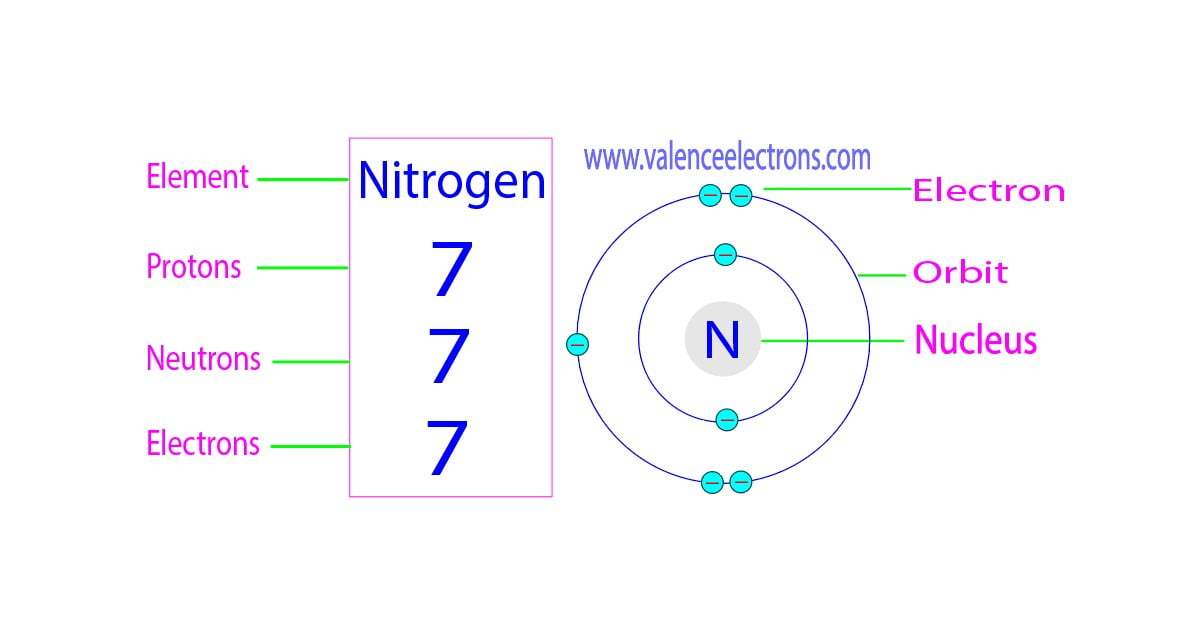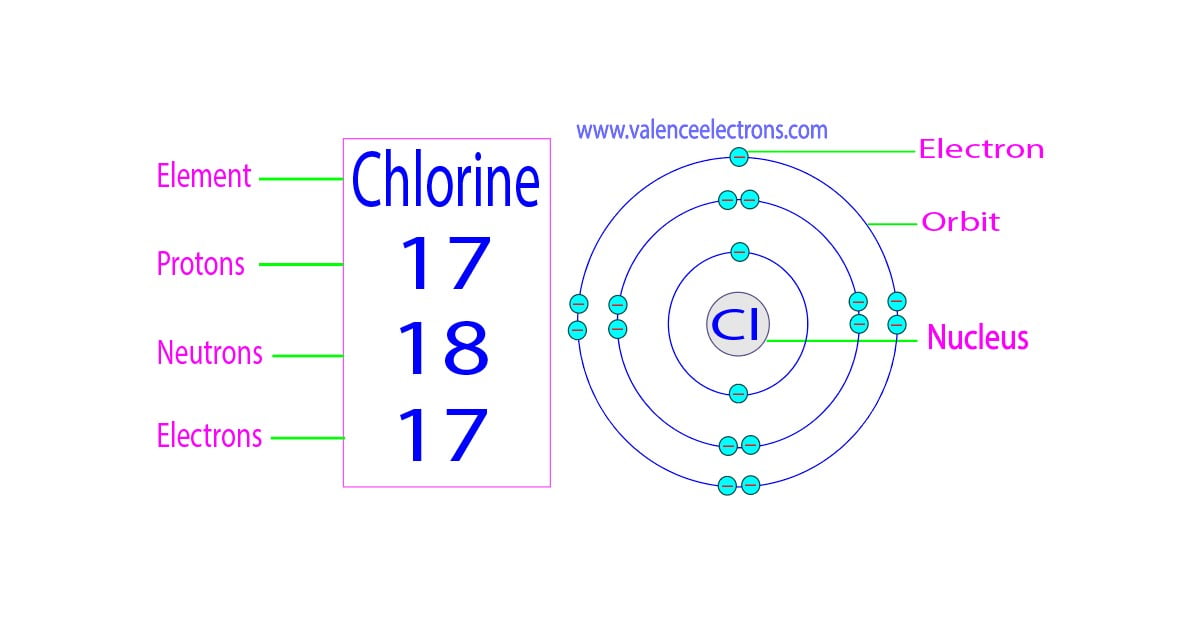How to find protons, neutrons and electrons in an element?
To know the properties of an element in the periodic table, you must know the number of protons and electrons of that element.
The number of protons and electrons can be easily determined from the periodic table but not the number of neutrons.
You have to do a little math to figure out the number of neutrons. This article discussed in detail how to easily find the number of protons, neutrons, and electrons in a zinc atom.
Also discussed are the position of electrons, protons, and neutrons in an atom, and the number of atomic masses. Hopefully, after reading this article you will know the details about this topic.
Where are the electrons, protons and neutrons located in an atom?
An atom is the smallest particle of an element that has no independent existence but is directly involved in chemical reactions as the smallest unit. Atoms are so small particles that they cannot be seen even under a powerful microscope.
The diameter of an atom of hydrogen is 0.1nm.(1.0 nm = 10-9m) So, if 1000 crore atoms of hydrogen are arranged side by side, it will be 1 meter long.

However, it has been possible to detect atoms by increasing the vision of a very powerful electron microscope by two million times. Numerous permanent and temporary particles exist in the atom.
Electrons, protons, and neutrons are located in the atom as permanent particles. Also, neutrino, antineutrino, positron, and mason are located in an atom as temporary particles.
Atoms can usually be divided into two parts. One is the nucleus and the other is the orbit. Experiments by various scientists have shown that the nucleus of an atom contains protons and neutrons.
The only exception is hydrogen, which has only protons in its nucleus but no neutrons. Electrons revolve around the nucleus in a specific orbit.
How to easily find the number of electrons, protons and neutrons in an atom?
Scientist Henry Gwynn Jefferies Mosle examined the X-ray spectrum of various elements from 1913-to 1914. The results of his experiments show that each element has a unique integer equal to the number of positive charges in the nucleus of that element.
He called that number the order of the atoms. Thus, the number of positive charges present in the nucleus of an element is called the atomic number of that element. The atomic number of the element is expressed by ‘Z’.
This number is equal to the serial number of the periodic table. We know that protons are located in the nucleus of an atom as a positive charge.
That is, the atomic number is the total number of protons. The atom is overall charge neutral. Therefore, the number of negatively charged electrons orbiting in its orbit is equal to the number of positively charged protons in the nucleus.
Atomic number (Z) = Number of charges in the nucleus (p)
How to find the number of protons in an element?
Protons are the permanent core particles of an atom. It resides in the center or nucleus of the atom. When a hydrogen atom removes an electron from its orbit, the positively charged particle that remains is called a proton. Hence, the proton is expressed by H+.
The relative mass of protons is 1, which is approximately equal to the mass of hydrogen (1.00757 AMU). However, the actual mass of the proton is 1.6726 × 10−27 kg. That is, the mass of a proton is approximately 1837 times greater than the mass of an electron.
Proton is a positively charged particle. Its actual charge is +1.602 × 10−19 coulombs. The diameter of a proton particle is about 2.4 × 10−13 cm.

For example, we know that there are 118 elements in the periodic table and the 7th of these elements is nitrogen. The elements in the periodic table are arranged according to their atomic number. Since nitrogen is the 7th element of the periodic table, the atomic number of nitrogen is 7.
You must always remember that the atomic number and the number of protons of an element are equal. Therefore, a nitrogen atom contains seven protons. Similarly, the number of protons of each element in the periodic table is determined.
How to find the number of electrons in an element?
Electrons are the permanent core particles of an atom. It resides in a specific orbit of the atom and revolves around the nucleus. The properties of the elements and their compounds depend on the electron configuration.
In 1897, scientist J. J. Thomson discovered the existence of electrons through cathode ray examination. The smallest of the permanent core particles of an atom is the electron. Its mass is about 1/1836 of the mass of a hydrogen atom.
The actual mass of the electron is 9.1085 × 10−28 g or 9.1093 × 10−31 kg. The mass of the electron is often ignored because this mass is too small. Electrons always provide a negative charge.
It is expressed by e–. The charge of electrons is –1.609 × 10–19 coulombs and the relative charge is –1. That is, the charge of an electron is equal to that of a proton but the opposite. You must also remember that the number of protons and electrons in an element is equal.

For example, we know that chlorine is the 17th element in the periodic table. So, we can say the chlorine atom has seventeen protons. Therefore, we can also say that a chlorine atom has seventeen electrons. Similarly, the number of protons of each element in the periodic table is determined.
How to find the number of neutrons in an element?
Scientist Chadwick discovered neutrons in 1932. It is located in the nucleus at the center of the atom. The neutron is a charge-neutral particle and it is expressed by n.
The charge of a neutron is zero and the relative charge is also zero. The mass of the neutron is 1.674 × 10−27 kg. The number of electrons and protons in an atom is the same but the number of neutrons is different.
We already know that the nucleus is at the center of the atom. There are two types of particles in the nucleus. One is a positively charged particle proton and the other is a charge-neutral particle neutron.
Almost all the mass of the atom is accumulated in the nucleus. Therefore, the mass of the nucleus is called atomic mass. The nucleus is made up of protons and neutrons. Therefore, atomic mass refers to the total mass of protons and neutrons.
Atomic mass (A) = Nucleus mass = Total mass of protons and neutrons (p + n)
Again, the mass of each proton and neutron is about 1amu. Therefore, the total number of protons and neutrons is called the atomic mass number. That is, the number of atomic mass(A) is = p + n
Thus, the number of neutrons in an element is obtained from the difference between the number of atomic masses and the number of atoms. That is, neutron number (n) = atomic mass number (A) – atomic number (Z)

For example, we know that carbon is the 6th element in the periodic table. So, the atomic number of carbon is 6 and the atomic mass number is 12. Neutron = 12 – 6 = 6.
| Mass number (A) | Atomic number (Z) | Neutron number = A – Z |
| 12 | 6 | 6 |
Therefore, a carbon atom has six neutrons. Based on the atomic number, mass number, and neutron number of the element, three things can be considered. These are isotope, isobar, and isotone. The number of neutrons depends on the isotope of the atom.
How to find protons, neutrons and electrons in an ion?
When an atom carries a negative or positive charge by accepting or rejecting electrons, it is called an ion. The ionic properties of the elements depend on the exchange of electrons.
In an atomic ion only the number of electrons changes but the number of protons and neutrons does not change. Molecules that form bonds by donating electrons to other molecules are called a cation.
In determining the electrons of the ion of these elements, the donated electron has to be subtracted from the previous electron. For example, aluminum has only three electrons in its last orbit.
During the formation of a bond, aluminum donates three electrons of the last shell to form bonds and turns into an aluminum ion(Al3+). In this case, the aluminum atom carries a positive charge.
Al – 3e– → Al3+

Here, the electron configuration of aluminum ion(Al3+) is 1s2 2s2 2p6. This positive aluminum ion(Al3+) has ten electrons.
On the other hand, elements that accept electrons from other elements to form bonds are called an anion. To determine the electrons in the ion of these elements, the previous electron must be added to the accepted electron.
For example, oxygen has six electrons in its last orbit. The last shell of an oxygen atom receives two electrons and turns into an oxide ion(O2–). In this case, the oxygen atom carries a negative charge.

O + 2e– → O2–
Here, the electron configuration of oxide ion(O2–) is 1s2 2s2 2p6. This negative oxide ion(O2–) has ten electrons. Similarly, the number of electrons in the ion of each element is determined.
What are the properties of protons neutrons and electrons?
| Name | Symbol | Relative Mass (amu) | Relative Charge | Actual Mass(kg) | Actual Charge(C) | Location |
| Proton | p | 1.00757 | +1 | 1.672×10−27 | 1.602×10−19 | Inside the nucleus |
| Neutron | n | 1.0089 | 0 | 1.674×10−27 | 0 | Inside the nucleus |
| Electron | e– | 5.488×10−4 | –1 | 9.109×10−31 | –1.6×10–19 | Outside the nucleus |
Why is it important for us to know the number of electrons and protons?
An atomic number is a number that carries the properties of an element. The number of electrons and protons in an element is determined by the atomic number. Also, the exact position of an element is determined in the periodic table.
The properties of an element can be determined by electron configuration. Also, the valency, valence electrons, and ionic properties of the elements are determined by the electron configuration.
To determine the properties of an element, it is necessary to arrange the electrons of that element. And to arrange the electrons, you must know the number of electrons in that element.
To know the number of electrons, you need to know the atomic number of that element. We know that an equal number of protons of atomic number are located in the nucleus of the element and electrons equal to protons are in orbit outside the nucleus.
Atomic number (Z) = Number of electrons
We know that the atomic number of phosphorus is 15. That is, there are fifteen electrons in the atom of the phosphorus element. So, it is possible to determine the properties of phosphorus from the electron configuration. Now, the electron configuration of phosphorus shows that the last orbit has five electrons.

Therefore, the valence electrons of phosphorus are five. The last shell of phosphorus has three unpaired electrons, so the valency of phosphorus is 3.
The last electron of phosphorus enters the p-orbital. Therefore, it’s a p-block element. To know these properties of phosphorus one must know the number of electrons and protons of phosphorus.






